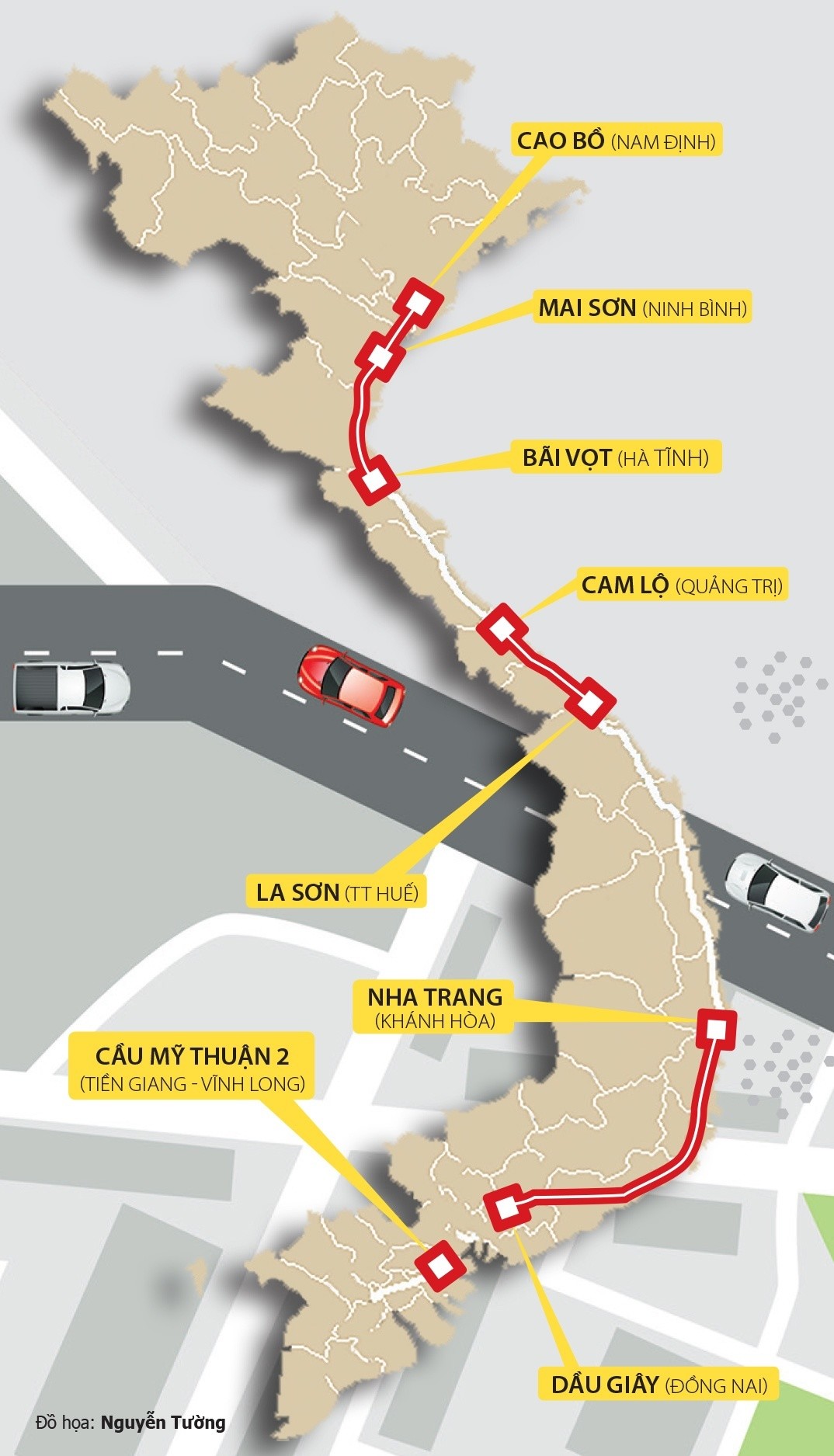In particular, investors must have experience in executing transport infrastructure projects, and those projects must have had capital at least equal to 50 percent of the projects which are now calling for investment, while the capital contributed by the investors must be at least equal to 20 percent of the projects which are now calling for investment.

Experts said strict requirements make the North-South expressway difficult to attract investors. (Graphic: Nguyen Truong)
Meanwhile, the total investment capital of the five component projects could reach VND52.4 trillion, or $2.2 billion, of which VND32.7 trillion will be from private investors, while the remaining will be from the state budget, said Nguyen Quang Toan from the Hanoi Transport University.
Thus, investors will have to spend VND6 trillion on each project. There have been lot of projects with the same capital undertaken by private investors. Therefore, Toan cannot see any problem in capital mobilization.
Ministry of Transport (MOT) sets easy requirements on capital mobilization. If investors cannot sign credit contracts after six months, the bidding contract with the ministry will be canceled. It would be better to shorten the deadline to three months.
And the biggest problem for investors is the high risk.
Until now, many BOT (build, operation, transfer) projects have reported losses. Notably, half of the projects under the management of the Vietnam Road Administration are taking losses.
The country now offers to sell toll fee collection rights to foreign investors, who requested the government to become guarantor for the turnover and exchange rate. But the government refused.
Investors are only interested in projects if they can foresee satisfactory profits, said Nguyen Dinh Tham from the Hanoi Civil Engineering University. In case that the government doesn’t become guarantor for exchange rate and turnover, investors will offer very high bidding prices.
He agrees that it is necessary to set strict requirements on investors’ financial capability and experience to avoid incapable investors. In lots of BOT projects, investors only had 10-15 percent of total capital needed, while the remaining capital was from bank loans.
If domestic firms are not strong enough to undertake projects, they can join forces with others to attend the bids.

















